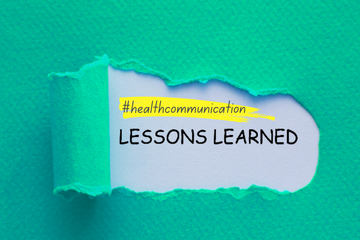Lessons learned: Use ‘soft’ language to communicate how groups think people should behave

You’re reading Lessons Learned, which distills practical takeaways from standout campaigns and peer-reviewed research in health and science communication. Want more Lessons Learned? Subscribe to our Call to Action newsletter.
“If your friends jumped off a cliff, would you?” Lots of us grew up hearing this biting retort about the power of our friends’ behavior on our own. For many, the implication that we couldn’t think for ourselves stung too much for the lesson in the phrase to get through. This tension between teaching about social norms and accidentally making people feel controlled or judged is important for health communicators to consider. How can we communicate about norms without threatening people’s sense of freedom?
Researchers have often studied the differences between communicating how people typically behave (i.e., descriptive norms) and communicating how people think others should behave (i.e., injunctive norms). For example, “only 1 in 100 people drove after drinking too much in the last month” is a descriptive norm, while “most people think you shouldn’t drive after drinking too much” is an injunctive norm. Some researchers have cautioned that using injunctive norms might threaten people’s sense of freedom since they imply a “right” way to behave. However, past studies have left open questions about whether injunctive norms are inherently threatening to freedom, or if how you present them matters more.
A recent study published in Health Communication explored how people reacted to injunctive norms based on two factors: (1) if the message contained approval or disapproval for a behavior and (2) how forceful the language was – whether it said people thought someone “should” or “must” do a behavior. To test this, they recruited 424 undergraduates to view messages featuring a descriptive or injunctive norm about healthy eating or responsible drinking. The injunctive norms also varied based on the two factors the researchers were interested in.
What they learned: People exposed to injunctive norms with “must” language felt their freedom was significantly more threatened than people who were exposed to descriptive norms or injunctive norms that used “should” language. People feeling that their freedom was threatened led to negative reactions to the message and worse attitudes and lower intentions to drink responsibly and eat a healthy diet. People did not feel more threats to their freedom based on whether the message was approving or disapproving of drinking/diet behaviors.
Why it matters: The COVID-19 pandemic revealed weaknesses in many institutional communicators’ playbooks. Many people felt threatened by messaging that left no room for agency while navigating their decisions to stay home from work, mask, and vaccinate. Studies like this one help us to learn from those mistakes and update our strategies for communicating vital health information more effectively.
➡️ Idea worth stealing: If you are communicating a group’s standards for behavior, use less forceful language to avoid threatening people’s sense of freedom. For example, instead of saying “most people think you must drink responsibly” you could say “most people think you should drink responsibly.”
What to watch: How health communicators evolve their strategies for communicating about social norms to avoid threatening people’s sense of agency.
– Elissa Scherer


